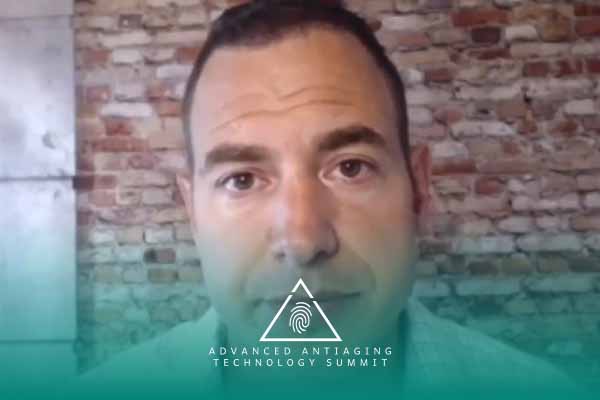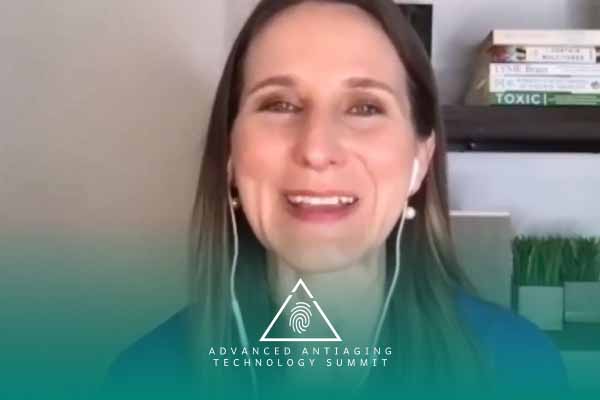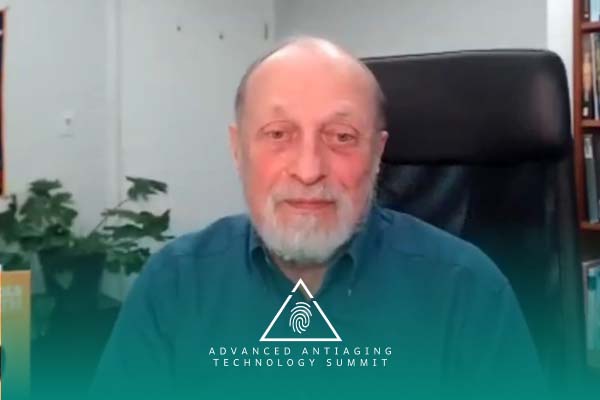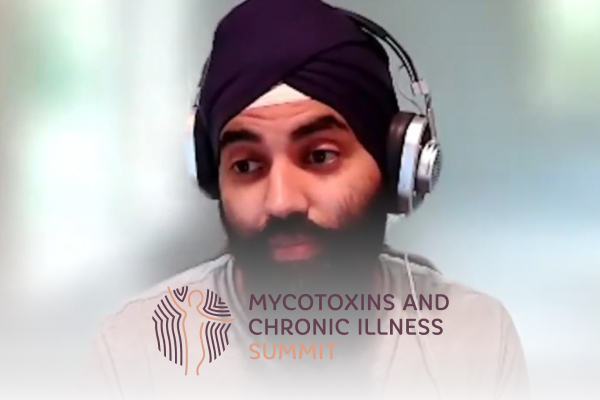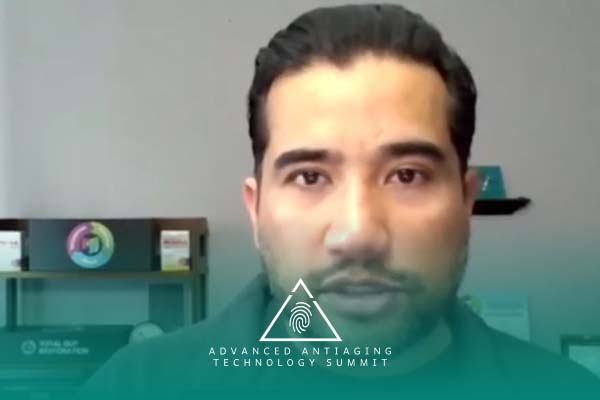Join the discussion below

Dr. Goel is a medical physician and founder of Peak Human Labs. His mission is to speak knowledge of the latest cutting edge medical tools and science in order more people to live in a Peak mental, physical and spiritual state. You can learn more about his work at longevity.peakhuman.ca. Read More
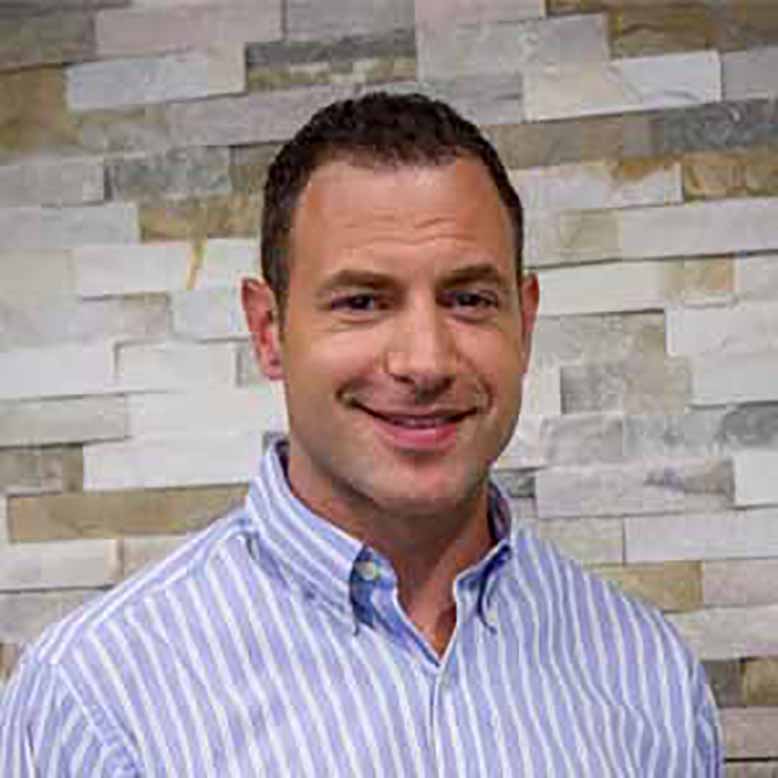
Dr. Jason Sonners: Fascinated with human biology and performance, Dr Sonners is always working to integrate new knowledge and practical experience. In addition to his Doctor of Chiropractic, he earned his Diplomate of the Chiropractic Board of Clinical Nutrition (DCBCN) and his Diplomate of the International Board of Applied Kinesiology... Read More
- Review of the physiology behind the therapeutic effect of HBOT.
- Describe some protocols for HBOT in regenerative medicine.
- How HBOT can reduce senescent cell burdern, lengthen telomeres, and improve cognitive function.
Related Topics
Access To Hyperbaric Therapy, Aging, Atmospheric Pressure, Cellular Function, Cellular Oxygen Demand, Chiropractic, Diffusion, Exercise Physiology, Functional Medicine, Hyperbaric Oxygen Therapy, Increased Pressure, Inflammatory Issues, Integrative Medicine, Mitochondrial Dysfunction, Natural And Nutritional Approach, Nutrition, Oxygen As A Nutrient, Oxygen Dissolving In Plasma, Oxygen Saturated Blood, Oxygen Saturation, Pressure Differential, Regenerative Medicine, Tissue Absorption Of OxygenSanjeev Goel, MD, FCFP (PC), CAFCI
Hello everyone, I’m Dr. Sanjeev Goel and you’re listening to the Advanced Anti-Aging and Technology Summit. And today I’m going to be interviewing Dr. Jason Sonners. Dr. Jason Sonners has always been fascinated by the machinery of the human frame and his drive to learn everything and anything he can to help, that it might even help even one of his patients, always working to integrate new knowledge and practical experience in addition to his doctor of chiropractic, and as Diplomat of the Chiropractic Board of Clinical Nutrition and as Diplomat of the International Board of Applied Kinesiology, Dr. Sonners is one of only 250 professionals in the world with this distinction.
He is currently enrolled at the University of Miami, School of Medicine Earning his PhD in molecular biology with a concentration in regenerative medicine. Dr. Sonners utilizes his combined training in various modalities to create comprehensive programs and help patients achieve their health goals. His patients are dealing with among other conditions a variety of autoimmune and neurological conditions allergies, autism, and cancer. He combines chiropractic hyperbaric oxygen therapy, nutrition, exercise, detoxification programs, and more to naturally support patients and guide them through their health challenges.
Dr. Sonners and his wife, Dr. Melissa Sonners are co-owners of the Core Therapies Family Wellness Center in Northern New Jersey, a holistic center with eight chiropractors whose specialties include functional neurology, functional medicine, hyperbaric oxygen, pre/postpartum pediatric, and sports injuries. Core Therapies also offers acupuncture, massage, infrared, sauna spinal decompression, yoga, and laser therapies. They’re also owners of New Jersey, HBOT and HBOT USA.
While serving on the faculty of of the International Hyperbaric Association, Dr. Sonners also faculty member Medmaps, a group of professionals offering comprehensive education and fellowship to medical professionals for the care of children with autism spectrum disorders and related chronic complex conditions. I hope you enjoy today’s talk with Dr. Sonners, I think it’s gonna be amazing. Hi everyone, I’m Dr. Sanjeev Goel and you’re listening to the Advanced Anti-aging and Technology Summit. Today I have Dr. Jason Sonners with me all the way from New Jersey. Welcome, Jason. Thank you so much.
Jason Sonners, DC, DIBAK, DCBCN, CCWP, CHP
Yeah, of course, thanks for having me. I’m excited to have our conversation together and see where we end up.
Sanjeev Goel, MD, FCFP (PC), CAFCI
Yeah, I saw that your bios has a huge, you’ve had a huge experience in helping patients with regenerative medicine, integrative medicine and helping them to live longer lives. So I’m curious about maybe before we get into things just give us a background. How did you even get into this space? ‘Cause I mean your training as chiropractor as a background, is that right?
Jason Sonners, DC, DIBAK, DCBCN, CCWP, CHP
Yeah so originally my background was exercise physiology. I felt like, you know, if I could, if I can get more people, you know, moving their bodies and moving their bodies properly, we could delay certain musculoskeletal issues or improve performance. And then I quickly found out that people had issues mechanically that weren’t even letting them get to the level of exercise that they needed. So, you know, chiropractic was my way of trying to figure out a better understanding of the mechanics of the human body. As I went through that, I realized nutrition plays as big a role if not a bigger role than even some of the musculoskeletal issues especially from an inflammatory standpoint.
So I really explored a lot of nutrition and nutrition work and started combining exercise and chiropractic and nutrition. And eventually, you know the patients that I was helping were pretty complex So I ended up going through a whole functional medicine program to really understand those levels of, you know, getting the blood work right and toxicity and really helping people at a much higher level with regard to their chronic inflammatory issues or mitochondrial dysfunction, but using more of a natural and nutritional approach. Eventually that took us to hyperbaric. And, you know, to me, oxygen, we’ll talk about this later I’m sure but oxygen is a nutrient.
I look at hyperbaric as a way to dose a very necessary nutrient of oxygen to our body to improve cellular function. And that’s kinda, you know, we’re still in practice. I still practice about a day and a half a week, but a lot of our time is spent helping people open clinics, training and educating doctors on hyperbaric and really trying to get the access. ‘Cause at this point, even now I think hyperbaric’s grown a lot in the last we’ve been doing about 14 years. It’s grown a lot in those years but really it’s grown a lot in the last two years and mostly even in the last six months to a year. And so with all this change and growth, I feel it’s really important to make sure that everybody’s very well-educated on it because it is a very safe tool. It’s a very effective tool, but there are certain rules and we need to kind of understand those rules and stay within them to make sure we keep everybody really safe while providing such a powerful therapy to our patients. So, you know, that’s kind of my transition, I guess, short story to where we are today.
Sanjeev Goel, MD, FCFP (PC), CAFCI
Okay yeah, let’s just dive right into hyperbaric therapy. So, from my understanding, I mean, yes, this is a, you know I’ve taken the 40 hour course and I’m opening a hyperbaric center right here in Toronto in a couple of months, but isn’t that basically you’re giving it high pressure, high pressure oxygen and that’s getting to the tissues, that this oxygen is getting right to the cells in a way that could never be possible in physiologic conditions. This is causing all types of healing it sounds like, you know, people I, you know, sometimes hear about these hyperbaric soft chambers that can get like and they put in their house. And I’m curious about the type of treatments you’re doing in the clinics, but maybe if you just wanna give a little bit better explanation than I did about, you know what is hyperbaric oxygen therapy and you know, what is, what differentiates the medical version versus what people are doing at home?
Jason Sonners, DC, DIBAK, DCBCN, CCWP, CHP
Sure, yeah, that’s a great question. So the reason why, even right now I live at sea level, at sea level there’s a, well everywhere there’s an atmosphere. And because of that atmosphere, there’s a pressure. And as a result of that pressure, when we breathe in there’s a pressure of oxygen and there’s a gradient between the pressure of the oxygen in the environment and the pressure of oxygen in our bloodstream. And so because of the pressure of oxygen in the environment is higher than the pressure in our bloodstream, there’s a diffusion that occurs down of concentration grade. If you remember, you know eighth grade biology, everything moves from high concentration to low concentration.
So, you know, even right now the reason that we absorb oxygen is due to that gradient. We could also say that when we go up in elevation let’s say you’re climb a mountain, everyone says there’s less oxygen. Well, it’s the exact same percentage. Air is 21% oxygen at sea level, air is 21% oxygen at the top of Mount Everest, but there’s less pressure. And because there’s less pressure there’s less of a driving force. The gradient that drives oxygen into our bloodstream when we breathe in is much lower at elevation and it’s much higher at level. If we took that exact same concept and we said now let’s go below sea level, that pressure continues to build. And one way to think about this is from sea level if you wanted to get half as much oxygen pressure you’d have to go 20,000 feet above sea level to get half the pressure.
If you wanted to go to double the pressure, it’s only 33 feet below the water. So it’s exponential increase in pressure as we descend below sea level, relative to where we are right now. Now normally, under normal physiologic conditions normal pressure, as that oxygen is absorbed into our bloodstream.It’s immediately picked up by red blood cells and the hemoglobin in the red blood cells carries it to wherever it’s going inside of our body. And then again, there’s a pressure differential between our capillaries and our cells. And so that pressure gradient allows oxygen to move from high concentration in the blood to lower concentration in the cell until again, there’s that same driving force that’s moving oxygen.
Once it comes back up to our lungs, it fills up again. The thing is, is that it has to dissolve in plasma before it could attach to a red blood cell. And then it has to leave from the plasma before it could get off of the red blood cell and continue to, you know, fulfill the cell’s requirements. And so what hyperbaric is doing is it’s literally dissolving exponentially more oxygen than normal in the plasma of the blood. So it will saturate red blood cells the same way we do even under normal circumstances.
But with this extra pressure, we’re creating a larger gradient, which allows for a much higher percentage diffusion. And then that diffusion, once we get to the cell layer, again, there’s a much larger gradient and a lot of that oxygen just offloads right out of the plasma and right into our cells. And so as important as oxygen is, I mean literally every cell in our body requires oxygen for energy production except for the red blood cells that carry it. And the only way to get more is to use pressure. We can’t really get a significant amount of extra oxygen without creating a change in the pressure environment first.
Sanjeev Goel, MD, FCFP (PC), CAFCI
Just, so just I think for the viewers and to make sure I understand it correctly, so when people are measuring, you know, oxygen saturation with the little devices and people, most people are at 99%. It means that we’re already saturated our hemoglobin with oxygen to max, pretty much. So the only way to do this in any greater way is to go directly dissolve it in the plasma by increasing the pressure. Is that correct?
Jason Sonners, DC, DIBAK, DCBCN, CCWP, CHP
Exactly, if we were on the surface, let’s say I was 97% saturated and then I had a green tank of medical oxygen and I put that on my face, I could most definitely go from 97 to a hundred percent but I’m not really gonna get much more above a hundred percent saturated ’cause it’s a hundred percent saturated. So the only exactly, the only way to get a further absorption of oxygen is to increase the pressure and the dissolving of oxygen into the bloodstream.
Sanjeev Goel, MD, FCFP (PC), CAFCI
And I believe that you’re in, when people go into these chambers, you know, two pressures or so two atmospheric pressures, we’re talking like an oxygen saturation or amount, that’s like five, six times the amount of, in our blood.
Jason Sonners, DC, DIBAK, DCBCN, CCWP, CHP
Yeah, so like rough, rough numbers, you know, two atmospheres with a hundred percent oxygen is about nine and a half times more oxygen than what we’re getting right now. So it’s a lot.
Sanjeev Goel, MD, FCFP (PC), CAFCI
It’s massively.
Jason Sonners, DC, DIBAK, DCBCN, CCWP, CHP
Yeah.
Sanjeev Goel, MD, FCFP (PC), CAFCI
So, is there any, is there a, the tissues can just take this up that they want this, is there a question that the tissue don’t need all this oxygen?
Jason Sonners, DC, DIBAK, DCBCN, CCWP, CHP
So that comes up a lot. And so there could be certain cells that are, they have enough an
their demand is being met regularly. So it’s not, you know, we can’t say, here go in the hyperbaric chamber, here’s all this extra oxygen but we’re going to make sure all of that goes to your elbow because that’s where you’re having your problem, right? It’s a systemic therapy. It goes everywhere, but there’s a few pieces to this, one is, with most chronic illness, most chronic inflammation and absolutely with any trauma or toxicity issues, you’re gonna have damage to the capillary beds, either everywhere systemically or least in local areas that might be injured.
So one of the things that hyperbaric does again because it’s a different, we’re literally bypassing red blood cell carrying capacity. And normally very little oxygen is dissolved in the bloodstream, in hyperbaric environments an enormous and all the extra quote, unquote extra oxygen we’re getting is dissolved in the bloodstream. And so if you have damaged capillaries, let’s say on one side and an injury right immediately next to it the red blood cells, cause the capillaries are broken, it’s very likely that the red blood cells can’t get through. And if they can’t get through, you can’t get oxygen to that area. But now that all the plasma is super saturated with oxygen, now there’s a way to deliver oxygen to a tissue that was starving prior to the hyperbaric experience. So that’s one way.
The next way is that when oxygen leaves a capillary it has a certain distance that it can travel before it gets utilized by a cell. And again, in a damaged model, or an a chronically inflamed model, we’re trying to penetrate those cells with oxygen but the distance that it can move is very limited. In a hyperbaric environment, the distance that the oxygen is able to move away from the capillary to interact with tissue is four times greater than under normal physiologic standpoint. So all of a sudden we’re getting more oxygen to an area that was starving.
It could travel further than it could normally travel. And then in the last few years, the last two or three years there’ve been some performance studies that were done saying exactly the question you asked, well how do you know my cells even need more oxygen? And so they’ve done a few studies especially with dual tasking. So, you know, doing a complex motor, like a movement pattern of some kind and then complex mental, you know, let’s say like a certain math or doing some sort of mental equations. So under work, can we perform better if there was more oxygen available is the question and what they show is whether it’s a physical activity or a mental activity, from baseline both show an increase in performance after hyperbaric and then they do dual tasking.
So you’re doing a complex motor and mental workload simultaneously and that also shows that there’s an increase in performance after the hyperbaric exposure. So potentially if you’re perfectly healthy which I don’t know that any of us are, you have zero inflammation and you’re completely at rest, extra oxygen probably doesn’t play a huge role in that moment. But if you have any injuries, old injuries that haven’t healed properly or new injuries or you’re chronically inflamed and, or you’re looking for an ability to heal old injuries or just perform better in your life, the extra oxygen could be massively meaningful in those situations.
Sanjeev Goel, MD, FCFP (PC), CAFCI
So maybe just, I want to just, again clarify for our listeners that when they go like, you know these oxygen bars that show up in Las Vegas and people are taking these like masks this is probably not gonna have much clinical impact.
Jason Sonners, DC, DIBAK, DCBCN, CCWP, CHP
Correct. So like a one to 3% at most, you know, of course you asked about like soft chambers versus hard chambers.
Sanjeev Goel, MD, FCFP (PC), CAFCI
Yes.
Jason Sonners, DC, DIBAK, DCBCN, CCWP, CHP
A soft chamber, a couple of ways to look at it, a soft chamber which is something some people use clinically, a lot of times they’re using them also at home. Sometimes they’re adding enriched oxygen and sometimes it’s air only. So if you look at just crunching some of those numbers a soft chamber that’s air only. So it’s 21% oxygen just like we have right now but we’re adding some pressure, you can get about a 27% increase in oxygen absorption which is still more than let’s say a green tank at the surface. Right, so the pressure makes a big deal. If you added a hundred percent oxygen at that same amount of pressure you’re looking at maybe a three and a half to four times increase in oxygen absorption. And then there’s a whole range all the way up to like two atmospheres, like we were talking which is gonna be somewhere around nine and a half times more oxygen. And we can go deeper than two atmospheres also if we need it to.
Sanjeev Goel, MD, FCFP (PC), CAFCI
Right, right, right, right. So when you were, when you were mentioning this but the impact that happened after, when those studies how long does the you think the treatment effect lasts? Like is this a half an hour effect, or is a few hours? Like, what does that?
Jason Sonners, DC, DIBAK, DCBCN, CCWP, CHP
If you were looking, you know, we break this down into two categories, there’s a metabolic component to hyperbaric where oxygen is a nutrient and we’re using it to oxidize your food ultimately to make energy ATP in the cell. And so more oxygen for almost like adding an air intake or cold air intake or a turbo charger to your engine. The more oxygen you can get into the system to a certain point, the more energy your cells can create. So there’s a metabolic component to it. And then there’s an entirely different category of cell signaling, epigenetic effect, you know, all the you know, F1 alpha, the reactive oxygen species all the cell signaling that occurs because of being exposed to changes in hyperbaric oxygen.
So if we talk about it just from a metabolic standpoint, we don’t really know because we haven’t done enough studies to get the exact number but most people would say it’s at least six to eight hours. It could be up to a day or a day and a half of, you know, increased energy production as a result of the hyperbaric experience. Most of the benefits that people are really using it for like the angiogenic effect, you know so rebuilding the capillary beds, rebuilding nerve tissue rebuilding muscle and ligament tissue all the collagen, the fibroblasts, the stem cells all these other really powerful effects of hyperbaric. those are traditionally after long-term use. So each, each session isn’t as important as, you know, the consecutive sessions where the body starts to consistently see a higher level of oxygen. And so it starts to adapt and make changes based on that increased oxygen.
Sanjeev Goel, MD, FCFP (PC), CAFCI
Interesting, so are you saying it’s an additive effect? Like something that’s, you know it doesn’t have to be necessarily every day but if you just, it’s a total number of sessions do you do that kind of give a cumulative effect?
Jason Sonners, DC, DIBAK, DCBCN, CCWP, CHP
Exactly. You know, if somebody said to me, well I’m only going to do 12 sessions, how should I do it? You know? If you did one session a month versus not that you would do this necessarily, but if you did one a month versus every day for 12 days the person who did it every day for 12 days will have a much more meaningful effect. The person who did it once a month will get a little boost in energy production, you know a little boost of immune function. There’ll be some short-term a little boost in antioxidants inside the body like superoxide dismutase and things like this. So there’ll be benefit of each session but the real changes, like the things that are literally changing people’s lives in the chamber, those are cumulative. It’s definitely additive. And it’s over a series of hours, over a series of months typically.
Sanjeev Goel, MD, FCFP (PC), CAFCI
So, yeah, sorry, just to just clarify that. So you’re saying it does make more sense to do it, do these sessions in a shorter time period than a long talk longer time period, is that right?
Jason Sonners, DC, DIBAK, DCBCN, CCWP, CHP
Yeah, most protocols. I mean, we get very specific with our protocols but if you just zoomed out and said like rough average, you know I would say it’s somewhere between three to six hours a week for about four to six weeks. You know, that there’s a lot of different ways to kind of chop that up depending on what the person really needed, but it’s looking at it doesn’t matter if you missed your session on Tuesday if you caught up on Thursday and basically if you needed four hours that week and you got four hours for the most part it’s gonna end up working out because it’s really over that four to six week period that it has to occur.
Sanjeev Goel, MD, FCFP (PC), CAFCI
Okay, awesome. I know that you’re, you work a lot with like athletes and because you start, I mean, from even a chyro background, so well, how are you seeing in with performance? Like what type of impact are you seeing with the use of hyperbaric oxygen therapy?
Jason Sonners, DC, DIBAK, DCBCN, CCWP, CHP
Yeah, so we do it two different ways. One, you might say, I wanna shift my performance literally in the next hour or two. And the other one is to say, in my opinion and just with my background in exercise phys sometimes performance has more to do with the fact that we’re always looking for the balance between training and our ability to perform. And so the question becomes are we, are we over-training certain times or are we under recovering? However you wanna look at that. And for the most part, that’s usually the case. And so if you start to build in more appropriate or more powerful recovery modalities if you’re recovering better before each bout, your performance is definitely gonna be better the next time.
So we’ll do longer, more consistent sessions if we’re dealing with more of a recovery side of it. And those are just after, after workouts or after, you know hard matches or whatever somebody sport happens to be or we’ll do shorter sessions literally within two or three hours of an event to give them that little boost for their event. You know, they made it illegal. So, you know, everybody in sports, everyone’s always looking for an edge and we all know about blood doping.
And you know, this is not blood doping although there’s some similar process in terms of the purpose of blood doping is to carry more oxygen ultimately, so that you have more fuel to burn as a, you know for your event. And this is a way to get more oxygen, happens to be illegal to utilize it there, it’s not considered blood doping. In horse racing, specifically your and horses, you know in the horse racing world, they use hyperbaric a lot actually for recovery and performance. You’re not allowed to go, you’re not allowed to have your horse your race horse go into a hyperbaric chamber within three or four hours of your event. It’s actually illegal for-
Sanjeev Goel, MD, FCFP (PC), CAFCI
But in humans is it allowed? Like if .
Jason Sonners, DC, DIBAK, DCBCN, CCWP, CHP
In humans nobody’s really, I mean, I’m sure at some point someone’s gonna say something about it but right now it’s like, you know it’s perfectly appropriate, legal, and it’s a great it’s a great way to create that performance edge.
Sanjeev Goel, MD, FCFP (PC), CAFCI
I had another speaker who was talking about oxygen deprivation and cycling with, you know, giving oxygen. Like, what are your thoughts on that? Like, I mean, this-
Jason Sonners, DC, DIBAK, DCBCN, CCWP, CHP
I mean, I think I love it all. Like I professionally, I focus a lot on hyperbaric, on the side I decided like a year and a half ago to go back to school. So I’m in the middle of a PhD in molecular biology for regenerative medicine. And I’m really just trying to figure out the whole like everything about our cell biology because I believe that once we fix one cell, you know the rest of the body basically follow suit. And so, you know, I’m focused on all these different avenues of cell regeneration. And so oxygen is part of that. Hypoxia is part of that, which is what you’re describing you know, red light and stem cells and PEMF and they all have temperature, regulate temperature change, sauna, cryo, cold bath, you know they all have a great place.
And it’s really exciting to start to hone that into which one is doing exactly what and when do I need that? Where do I stick it? And how do I organize a plan basically to encompass all of the tools that we might need that all move us in that right direction, ultimately but there’s a huge benefit to hypoxia and hypoxic training or things like EWOT, exercise with oxygen therapy, you’re cycling intensities of demand, supply and demand. You’re cycling intensities of amount of oxygen delivered.
So to me, it’s not like one is better or worse than the other. To me, every time I have a conversation with a patient or a client that’s just looking to implement in their life, the question is what’s the goal? Because depending on whatever the goal is determines which of those pieces we need to stick into the, you know, into the program. So for some people, hypoxic or hypoxia training is totally appropriate. And for other people, it would be impossible to even do it. There’s also some interesting thing about hyperbaric which is, and there was a great paper I think it was in 2019 that came out.
It’s a concept that’s been around in hyperbaric but they’re really moving it forward to develop it but it’s, they call it the hyperoxia, hypoxia paradox. And what they’re saying is when you’re in the chamber you’re getting all this extra oxygen. That’s the part we always focusing on. That’s the part that’s the metabolic component to hyperbaric in terms of energy production and all those things that we were talking about. When you get out of the chamber, all of this oxygen is now coming out of your body, but it’s not coming out and being, you know useless, it’s coming out and it’s interacting with all of your cells. And that’s the cell signaling cascades that those get signaled more when you get out than when you were in and what happens is yeah, what’s that?
Sanjeev Goel, MD, FCFP (PC), CAFCI
Like oxygen fasting maybe, maybe it’s something like that.
Jason Sonners, DC, DIBAK, DCBCN, CCWP, CHP
Exactly right, it’s starts to go through with the role, if you will, I don’t know if that’s the right word but your body thinks it’s losing oxygen. And so a lot of the same hypoxic events that occur in real hypoxia, occur with relative hypoxia without ever actually having to be hypoxic. And so there are some, there are some pros and cons. I mean, the list goes on probably too much detail for right now, but there’s great ways to blend all of these therapies together based on whatever the person’s goals are, you know what their health goals are.
Sanjeev Goel, MD, FCFP (PC), CAFCI
Awesome. So the, I know this is mostly, we’ve been talking about aging and I know that you’re doing a study on looking at, at a epigenetic aging and hyperbarics, you wanna just to tell us about that? Like what’s your study?
Jason Sonners, DC, DIBAK, DCBCN, CCWP, CHP
Sure, yeah. You know, I think, again, going back to the idea here is and I think most of us who are in this field and even if you’re just looking at populations as they’re getting older, you know you see a huge difference, you know, you might so somebody’s 80 years old and they’re, you know they’re looking and acting like they’re 90 or a hundred, you know, someone who’s 80 years old who’s looking and acting like they’re 60 and there’s clear delineations between like, well what makes one person that end of the spectrum versus you somebody else on the other end of the spectrum. And obviously, you know, most people I think understand now that longevity is, it’s happening, you know, humans are absolutely living longer but we’re also seeing, like in the case of like most of my grandparents and even parents, quality of life doesn’t match longevity by a long shot.
And so we have all this advanced age but we don’t really have advanced quality. And that’s what really sent me back to school. So I’m like, it doesn’t make any sense ’cause I know it’s possible cause we see some people can do that really well. They have long, long life with high quality, but a lot of us have longer lives and we’re losing that quality. And so what, what kinds of things can we do to start, you know, figuring that out? And so to me if you look at chronic inflammation and if you looked at most chronic illnesses, all the, the neurodegenerative, the auto-immune, cancer metabolic so many of these diseases are rooted in chronic inflammation and they’re rooted in metabolic dysfunction and it creates an environment that’s literally just speeding up the aging process.
And I think if we just dealt with those aspects and we were able to reduce people’s inflammation, we were able to stimulate growth, recovery and repair, it’s like, what’s the difference, you know, I have three little kids, four, eight, and 10 you know, they get a cut or, you know my son broke his arm a year ago like he was out of his cast in three weeks. We’re lucky if you know, if we’ll get six weeks. And so what’s the difference? It’s how many growth factors do we have present? How much energy do our cells make? How much inflammation are we burdened with every day?
You know, what’s our fuel source what are we putting into our body? And it’s blending all of these different avenues in order to improve that cellular function. So, you know, hyperbaric, I think because if you look at wound care alone, wound care is probably the most commonly used condition for hyperbaric. So you have a non-healing wound and you know after X amount or six weeks of antibiotics with increasing intensities, if you’re if you haven’t healed yet, they may recommend hyperbaric yet almost all patients getting hyperbaric for wound care even at those late stages ’cause we delay it so long still respond amazingly. What’s happening, they’re healing and they’re recovering, they’re reducing inflammation, they’re rebuilding tissue, they’re releasing stem cells, they’re rebuilding, you know, the, the microvasculature so we can get oxygen to the area. It’s keeping infection at bay, it’s doing all the things that we need to heal that wound and those are really almost all the same mechanisms that we all need to continue to heal from our life.
You know, the stress of our life, the toxins of our life, the occasional poor choices we may make in our life. If we had a plan to heal and recover faster throughout all of our years I have no doubt that we would also see an improved quality of life through the aging process. And so that’s really what we’re looking at. We’re looking at multiple aspects telomeres, we’re doing you know, true diagnostics methylation panel. We’re gonna be looking at stem cells and reactive oxygen species balance. Superoxide dismutase, you know, different measurements of cell function inflammation control, and epigenetic control to see if we can-
Sanjeev Goel, MD, FCFP (PC), CAFCI
What is the actual, what is the intervention? Like how much, how many treatments of hyperbaric and over how much time period?
Jason Sonners, DC, DIBAK, DCBCN, CCWP, CHP
So what we’re doing actually, so there was a study I mean, we brought it up earlier, when you and I were talking but there was a study that came out in 2020 specifically on telomeres and hyperbaric. And so for the audience, you know, telomeres are basically our DNA is all the instructions that our cell needs to function properly. And at the end of our DNA are these tales and they’re called telomeres. And as we get exposed to oxidation or things that are trying to break our cells down, or our DNA down these tails get gobbled up first before it actually reaches our DNA. And there’s an idea that these telomeres play a role in longevity and quality of life because the longer the telomeres are, the less likely our DNA is being damaged.
The shorter our telomeres are, the more likely our DNA will be damaged. And if we can keep our DNA healthy, then we have a strong set of instructions for cells to continue to function normally over long periods of time. And so in this study that we were talking about, it was you know, it was two atmospheres, a hundred percent oxygen. It was five days a week, 90 minutes a session I think for two months. And they found in two months an increase in telomere length of 20%, which is one of the largest changes in telomere length in one of the shortest periods of time that I’ve ever read about. So that was a pretty monumental study that came out and we were obviously, we were all really excited about it. So-
Sanjeev Goel, MD, FCFP (PC), CAFCI
There’s actually been anything that’s been shown to increase telomere length I can decide maybe high intensity interval training was like a 5% increase.
Jason Sonners, DC, DIBAK, DCBCN, CCWP, CHP
Right, I mean, I think like, You know, if you start doing your fasting and caloric restriction study I think you’ll see that there’s probably a few things that just haven’t been studied that way yet. But I believe that oxygen is one of those things. I definitely believe that exercise is one of those things. I definitely believe that fasting is one of those things, you know, that it they all stimulate very similar stem cell production energy production, and detoxification in a way that we’re, it’s really creating like a a blank slate for the body to rebuild from. And those are the kinds of things that I think stimulate something like, you know reverse transcriptase to build long telomeres, you know, so, you know, that was that was an amazing study that came out.
So, you know, we wanna to do that also again just to, you know, one of the strongest signs of a good study is that it’s replicatable, right? So we wanna replicate part of that to show that, yes this is absolutely a hundred percent part of what happens when people go through these exposures. The other part of our research is really gonna be to look at, ’cause if hyperbaric is missing something right now it’s missing a dose curve to go back to those soft chambers how much do they help us? Do they help us?
Can you do you know this treatment at this pressure and the same treatment at this pressure and get the same result? Or is there some sort of like dose response curve which is what ultimately what I believe? And so the research that we just started is looking at that, it’s different pressures over different periods of time, checking these at intervals to see at what pressure and over what period of time does what happen, ’cause that’s really we literally don’t have those answers right now. And I think those kinds of answers will solidify so much of the protocol misunderstanding I think that’s out there in hyperbaric right now.
Sanjeev Goel, MD, FCFP (PC), CAFCI
So you’re gonna be also checking epigenetic aging as well as, as long as well as telomere length?
Jason Sonners, DC, DIBAK, DCBCN, CCWP, CHP
Yeah, epigenetic like the whole, you know that methylation panel.
Sanjeev Goel, MD, FCFP (PC), CAFCI
Methylation panel.
Jason Sonners, DC, DIBAK, DCBCN, CCWP, CHP
Yeah, the telomere length, and then just a bunch of other mark, a cytokine panel for inflammation. You know, we have about 32 different markers that we’re looking at all related to inflammation, stem cell production and epigenetic and genetic protection.
Sanjeev Goel, MD, FCFP (PC), CAFCI
Wow, that’s really exciting. So what do you think the next year is looking like? Like what, where do you think it’s gonna go now with regards to understanding of hyperbaric oxygen therapies?
Jason Sonners, DC, DIBAK, DCBCN, CCWP, CHP
Yeah, I mean I think it’s, it’s kind of, it’s an amazing time in my mind to be a part of this because not just hyperbaric so many of these different modalities and protocols and tools and you know, in our practice especially once we get somebody to a better place and sort of away from their disease process to take them through regenerative processes beyond that is also so rewarding ’cause we’re just getting further and further away from you know, whatever their initial issues happen to be. But hyperbaric, unlike a lot of other therapies like cryo as one or, or sauna, or it’s kind of like once they hit the market, they really just took off. Hyperbaric’s been around for in some capacity over 300 years.
And literally all the way up until about 20 years ago, like virtually it was just completely unused in the last 20 years utilization, awareness has grown a little but in the last five, but really in the last two years, the interest level, the awareness of, the research for, you know, patients who are looking for it, doctors are starting to implement it more, clinics are growing all over the country. And so, you know, I see this being an, I see this being something that went from very difficult to find someone doing to, you know, hopefully, you can go every corner maybe, maybe not that often, but you know at least every city, you know, we have, we were in New Jersey, it’s not a big state, very populated state.
We still have people who travel two hours to come to our clinic. We have another clinic outside of Philly that’s about two and a half hours away. And it splits the difference for people but they’re traveling at least often 45 minutes, an hour, an hour and a half, two hours just to get it, you know and that’s in this area. So, you know, I really hope that’s why we turned our attention to really helping to train doctors, helping to certify doctors. We offer like a 40 hour course like what you took, specifically in functional medicine.
So we took the 40 hour course and we, sort of reprogrammed some of the materials so that it helps to focus that material for people like you and I, where, you know, we’re not treating gangrene and we’re not treating wounds in our clinic. I don’t think you are. I mean, I’m not, you know I’m looking for all these other avenues of where hyperbaric comes into play. And so we, our curriculum is really built around that and doctors to get a really from understanding. All the same science it’s all the same gas laws. We’re just applying it for, you know, for our purposes.
Sanjeev Goel, MD, FCFP (PC), CAFCI
Okay, where should our viewers go to learn more about the work, your clinics and the work you’re doing? Where should they go?
Jason Sonners, DC, DIBAK, DCBCN, CCWP, CHP
So our main website is HBOT USA. So HBOTUSA.com, we have, you know Facebook and Instagram are both HBOT USA. We have a YouTube channel also HBOT USA. Probably have 110 videos on hyperbaric and certain uses or how to calculate dose or, you know and it’s all, everything is referenced. I have all of the, in the description always the studies that I’m talking about everything’s really well referenced there. I finished a book about a year and a half ago, “Oxygen Under Pressure.” So that’s on Amazon, so you could, you know anyone who wants to can check that out. You can always email me, DoctorJasonSonners@HBOTUSA, also, I answered a lot of emails every day but I don’t mind, people are learning, You know, people are curious and people want to learn more you know, our main, that main website, HBOT USA it’s primarily an education website. It’s just to get people to understand it better to understand if it’s a good fit for them if they’re the patient, or if it’s the right fit for them if they’re the doctor wanting to start to utilize this type of therapy in their clinic.
Sanjeev Goel, MD, FCFP (PC), CAFCI
That’s amazing. Thank you so much, so inspiring. And I think our viewers are gonna learn more and more about hyperbaric. It’s gonna change their lives. Thank you.
Jason Sonners, DC, DIBAK, DCBCN, CCWP, CHP
Yeah, you’re so welcome. Thanks for having me.
Downloads

